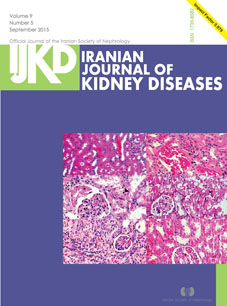Dermatologic Manifestations in End-stage Renal Disease
Abstract
End-stage renal disease (ESRD) is a rapidly growing global health problem within the past decades due to increased life expectancy, diabetes mellitus, hypertension, and vascular diseases. Since ESRD is not curable definitively, patients suffering from ESRD have a very low quality of life; therefore, symptomatic management is the cornerstone of medical treatment. Uremia affects almost all body organs, such as skin, through different mechanisms including biochemical, vascular, neurologic, immunologic, hematologic, endocrine, and electrolyte and volume balance disturbances. Some of these conditions are associated with significant morbidity, and patients with ESRD commonly present with a spectrum of dermatologic disorders. Each one has its own unique presentation and treatment approaches. In this review article, we discuss the clinical presentation, pathophysiology, and treatment of the most common skin disorders associated with ESRD.


